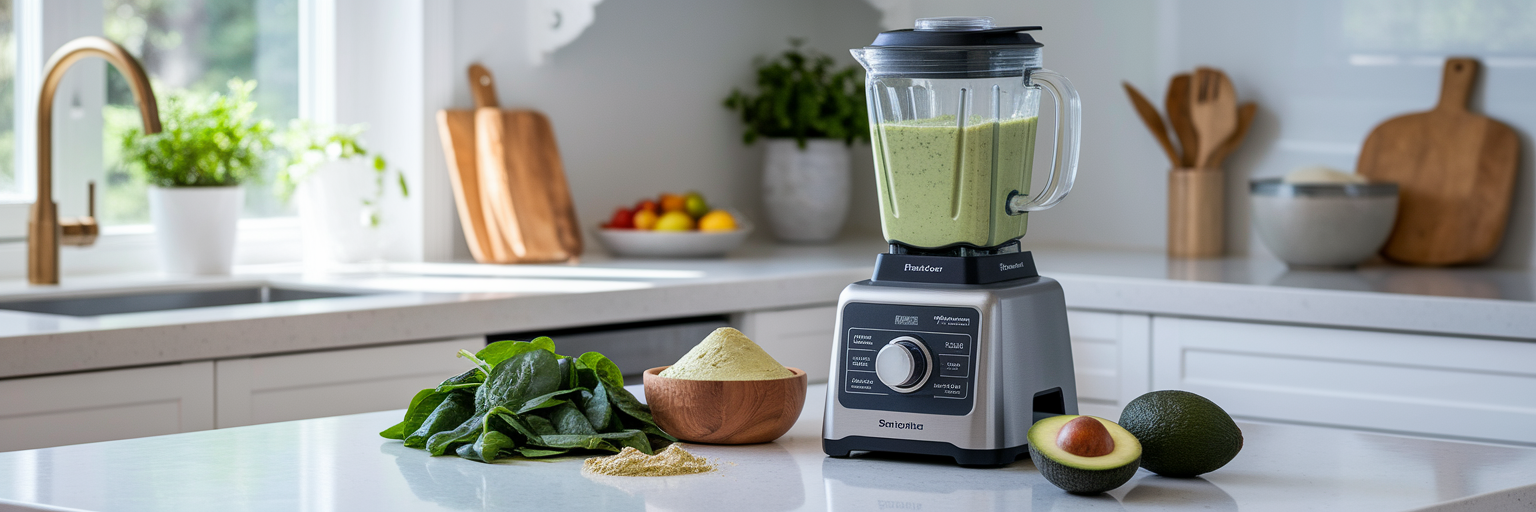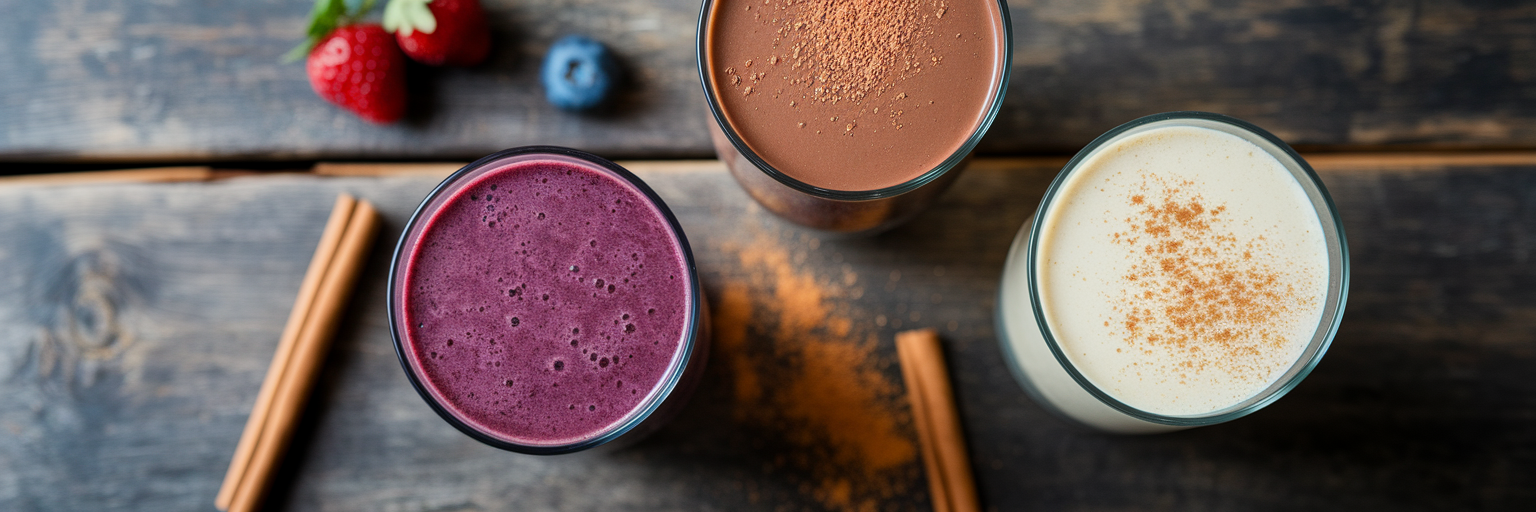Let's be honest: sticking to a weight loss plan can feel like a chore, especially when the food is bland or unsatisfying. We've all been there. But what if one of the most effective tools for managing weight could also be one of the most delicious parts of your day? Protein is a powerful ally on this journey, and using a vegan protein powder for weight loss can make hitting your goals much more convenient and enjoyable.
Why Plant-Based Protein Supports Weight Management
Before we get into making delicious shakes, it helps to understand why protein is so effective for weight management. It’s not magic; it’s science, and it works in a few key ways.
First, protein is fantastic for promoting satiety. Foods rich in protein help you feel fuller for longer compared to fats and carbohydrates. When you feel satisfied after a meal, you're naturally less likely to reach for extra snacks, which helps reduce your overall calorie intake without feeling deprived.
Second, protein plays a vital role in preserving lean muscle mass, especially when you're in a calorie deficit. When you lose weight, you want to lose fat, not muscle. Maintaining muscle is crucial because it keeps your metabolism running efficiently. A higher metabolism means your body burns more calories, even at rest.
Finally, there's the thermic effect of food (TEF). Your body actually uses energy to digest and process the food you eat. Protein has a higher thermic effect than fats and carbs, meaning your body burns more calories just breaking it down. While it’s not a massive number, every little bit helps. A high-quality vegan protein powder is a convenient tool to supplement a diet rich in whole foods, helping you meet your protein needs easily.
Choosing the Right Vegan Protein Powder
Walking down the supplement aisle can be overwhelming, with countless tubs all promising great results. When it comes to choosing a vegan protein powder, a little knowledge goes a long way in helping you find a product that works for you and your goals.
How to Read the Nutrition Label
The front of the package is marketing; the back is where the truth lies. Look for a short, clean ingredient list. The fewer unpronounceable ingredients, the better. Pay close attention to the sugar content. A good rule of thumb is to aim for a powder with less than 2 or 3 grams of sugar per serving. Many brands use fillers or artificial sweeteners that can cause digestive upset, so simplicity is key.
Understanding Common Plant Protein Sources
Vegan protein powders are made from various plant sources, each with unique characteristics. Blends are very common because they combine the strengths of different proteins to create a complete amino acid profile and a better texture. For a deeper look at what makes a great supplement, our guide to the best protein powders breaks down top contenders.
| Protein Source | Key Characteristics | Best For | Texture Profile |
|---|---|---|---|
| Pea Protein | High in iron and BCAAs. Typically hypoallergenic. | Muscle building and satiety. | Can be smooth but sometimes has a distinct earthy flavor. |
| Rice Protein | Hypoallergenic and easily digestible. | Sensitive stomachs and post-workout recovery. | Can be slightly gritty if not finely milled. |
| Soy Protein | A complete protein with all essential amino acids. | All-purpose use, provides a complete protein source. | Generally smooth and creamy. |
| Hemp Protein | Rich in fiber, omega-3s, and omega-6s. | Adding fiber and healthy fats to a shake. | Often has a grainier texture and nutty, earthy taste. |
This table compares the most common single-source vegan proteins. Many high-quality powders use a blend of these to achieve a balanced amino acid profile and an improved texture.
The Importance of Third-Party Testing
In the U.S., look for seals from third-party testers like NSF Certified for Sport. This certification means an independent organization has verified that the product contains what the label says it does and doesn't contain any harmful contaminants. It’s a mark of safety and quality assurance that provides peace of mind. When you're just starting, choosing a versatile flavor like a high-quality vanilla or chocolate makes it easy to customize your shakes.
Mastering the Art of the Smooth Shake

If you've ever been put off by a gritty, chalky protein shake, you're not alone. That unpleasant texture is one of the biggest complaints about plant-based powders. The good news is that it's completely avoidable with the right technique.
First things first: ditch the shaker cup. While convenient, it just can't compete with the power of a high-speed blender. The blades of a good blender spin fast enough to pulverize the plant protein particles, creating a genuinely smooth and creamy consistency that a shaker bottle simply can't achieve.
Next, let's talk about creamy additions. These ingredients are your secret weapons for a silky-smooth shake:
- Half a frozen banana: This is a classic for a reason. It adds natural sweetness and an ice-cream-like consistency.
- A spoonful of avocado: You won't taste it, but you'll notice the difference. It adds healthy fats and a luxurious, velvety texture.
- A tablespoon of chia seeds or flax seeds: When blended, they help thicken the shake and add a boost of fiber and omega-3s.
- A scoop of nut butter: Almond or cashew butter can add richness and creaminess, along with healthy fats to keep you full.
Finally, consider your liquid. Water is a great low-calorie option, but if creaminess is your goal, unsweetened plant-based milks like almond, cashew, or soy milk are superior choices. They add a richer base that complements the other ingredients perfectly.
Natural Flavors to Elevate Your Shakes
Now that you've nailed the texture, it's time to focus on flavor. This is how to make vegan protein shakes taste good and banish that "earthy" or "grassy" undertone for good. With a few simple, natural additions, you can transform your daily shake into a treat you actually look forward to.
Think of your protein powder as a base. Finding the right one is key, so feel free to explore our collection of products to find the perfect match for your creations. From there, you can customize it with these calorie-conscious flavor enhancers:
- Fruits for Flavor: A handful of mixed berries (fresh or frozen) adds tartness, sweetness, and a dose of antioxidants without a lot of sugar. A small amount of a more tropical fruit like mango or pineapple can also be a game-changer, but use it in moderation to keep calories in check.
- Spices and Extracts: This is where you can get creative without adding any calories. A dash of cinnamon not only adds warmth but can also help regulate blood sugar. Nutmeg, cocoa powder, or a few drops of pure vanilla or almond extract can completely change the flavor profile of your shake.
- Natural Sweeteners: If your shake needs a little more sweetness, there are great options. The best natural sweeteners for smoothies depend on your goals. For zero-calorie options, look for pure stevia or monk fruit extract. If you have a little room in your calorie budget, a single Medjool date (pitted) or a teaspoon of pure maple syrup adds sweetness along with trace minerals.
Three Delicious Weight Loss Shake Recipes

Ready to put it all together? Here are three simple plant based protein shake recipes designed for flavor and function. Each one is easy to make and packed with nutrients to support your goals.
Berry Blast Smoothie
This shake is bursting with antioxidants and fresh flavor, making it a perfect way to start your day.
- 1 scoop Vanilla Vegan Protein Powder
- 1 cup unsweetened almond milk
- 1/2 cup mixed frozen berries
- 1 tbsp chia seeds
- Handful of spinach (optional, you won't taste it!)
Instructions: Combine all ingredients in a high-speed blender and blend until smooth and creamy.
Chocolate Peanut Butter Craving-Crusher
When a dessert craving hits, this rich and satisfying shake will hit the spot without derailing your progress.
- 1 scoop Chocolate Vegan Protein Powder
- 1 cup unsweetened soy or cashew milk
- 1 tbsp peanut butter powder (or 1/2 tbsp regular peanut butter)
- 1/2 frozen banana
- 1 tsp cocoa powder for extra richness
Instructions: For a rich, satisfying flavor, we recommend using a high-quality powder like our Chocolate Vegan Protein. Blend all ingredients until completely smooth.
Creamy Vanilla Spice Shake
Warm, comforting, and subtly sweet, this shake tastes like a decadent treat.
- 1 scoop Vanilla Vegan Protein Powder
- 1 cup unsweetened almond milk
- 1/4 tsp cinnamon
- Pinch of nutmeg
- 1/2 tsp pure vanilla extract
- 4-5 ice cubes
Instructions: Blend everything together until the ice is fully crushed and the shake is thick and frothy. Once you've tried these, check out our other 3 easy vegan protein recipes you'll actually crave for more delicious ideas.
Smart Supplementation for Sustainable Results
To get the most out of your protein supplement, it's helpful to be strategic. When people ask how much protein for weight loss is needed, a common guideline is to aim for a specific range. As experts at FitResults.net point out, a common target is 0.8 to 1 gram of protein per pound of your goal body weight to effectively support muscle while in a calorie deficit.
Remember, a protein shake is a supplement to a balanced diet, not a total meal replacement. It’s designed to fill nutritional gaps and make it easier to hit your protein goals. The best time to have your shake depends on your schedule. It can be a quick and filling breakfast, a recovery drink after a workout, or a mid-afternoon snack to curb cravings and prevent overeating at dinner.
The key is consistency and finding what works for you. Have fun experimenting with different flavors and ingredients. For more tips on nutrition and wellness, be sure to visit our blog.



